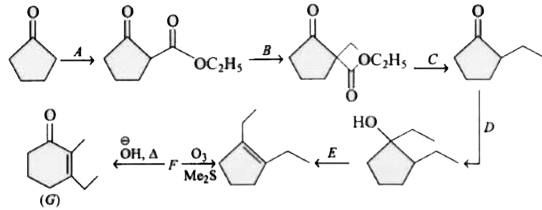1g of hydrogen is converted into 0.993g of helium in a thermonuclear reaction. The energy released is.
63×107J
63×1010J
63×1014J
63×1020J
The correct Answer is:b
To solve the problem of finding the energy released when 1 g of hydrogen is converted into 0.993 g of helium, we will follow these steps:
Step 1: Calculate the Mass Defect
The mass defect (Δm) is the difference between the initial mass and the final mass after the reaction.
Δm=Initial mass−Final mass
Given:
- Initial mass = 1 g (of hydrogen)
- Final mass = 0.993 g (of helium)
Calculating the mass defect:
Δm=1g−0.993g=0.007g
Step 2: Convert Mass Defect to Kilograms
Since the energy formula requires mass in kilograms, we need to convert grams to kilograms.
Δm=0.007g=0.007×10−3kg=7×10−6kg
Step 3: Use Einstein's Mass-Energy Equivalence Formula
The energy released (E) can be calculated using Einstein's mass-energy equivalence formula:
E=Δm⋅c2
Where:
- c = speed of light = 3×108m/s
Step 4: Calculate the Energy Released
Substituting the values into the equation:
E=(7×10−6kg)⋅(3×108m/s)2
Calculating c2:
c2=(3×108)2=9×1016m2/s2
Now substituting back into the energy equation:
E=7×10−6⋅9×1016
Calculating the energy:
E=63×1010J
Final Answer
The energy released is:
E=6.3×1011J
The mass defect (Δm) is the difference between the initial mass and the final mass after the reaction.
- Initial mass = 1 g (of hydrogen)
- Final mass = 0.993 g (of helium)
Since the energy formula requires mass in kilograms, we need to convert grams to kilograms.
The energy released (E) can be calculated using Einstein's mass-energy equivalence formula:
- c = speed of light = 3×108m/s
Substituting the values into the equation:
The energy released is:
Topper's Solved these Questions
- NUCLEIBOOK - DC PANDEY ENGLISHCHAPTER - NUCLEIEXERCISE - CHECK POINT 13.3
15 Videos
- NUCLEIBOOK - DC PANDEY ENGLISHCHAPTER - NUCLEIEXERCISE - CHAPTER EXERCISES
78 Videos
- NUCLEIBOOK - DC PANDEY ENGLISHCHAPTER - NUCLEIEXERCISE - checkpoint 13.1
10 Videos
- MODERN PHYSICS - 2BOOK - DC PANDEY ENGLISHCHAPTER - MODERN PHYSICS - 2EXERCISE - Level 2 Subjective
10 Videos
- RAY OPTICSBOOK - DC PANDEY ENGLISHCHAPTER - RAY OPTICSEXERCISE - Medical entrance gallary
76 Videos
Similar Questions
A certain mass of hydrogen is changed to helium by the process of fusion. The mass defect in fusion reaction is 0.02866u. The energy liberated per u is
(given 1u=931MeV)
View SolutionWhat is the approximate percentage of mass converted into energy in the following thermonuclear reaction ?
.1H2+.1H2+.1H2→.2He4+.1H1+.0n1+21.6 MeV
View Solution
Knowledge Check
One milligram of matter is converted into energy. The energy released will be
A9×106 JB9×108 JC9×1010 JD9×1012 J
Name of the reaction which converts F into G:ACannizzaro reactionBClaisen condensationCAldol condensationDReformatsky reaction
The Delta_(eg)H^(ɵ) of Br is 3.4eV. How much energy in kcal is released when 0.8g of Br(g) is completely converted to Brɵ(g) ions. (1eV=23.06kcalmol1−)
b. The energy released when 107 atoms of I(g) is converted to Iɵ(g) ions, is 5×10−13J. Calculate ΔegHɵ of I(g) in (i) eVatom−1 and (ii) kJmol−1.
View SolutionIf a mass of 3.6 g is fully converted into energy, how many kilowatt hour of electrical energy will be obtained ?
View SolutionIn a nuclear fission 0.1% of mass is converted into energy. The energy released by the fission of 1kg mass is
View SolutionThe binding energy per nucleon of deuterium and helium atom is 1.1MeV and 7.0MeV. If two deuterium nuclei fuse to form helium atom, the energy released is.
View SolutionThe binding energy per nucleon of deuterium and helium atom is 1.1MeV and 7.0MeV. If two deuterium nuclei fuse to form helium atom, the energy released is.
View SolutionIn a hydrogen bomb, hydrogen is converted into
a. Barium b. Uranium-235
c. Uranium-238 d. Helium
View Solution
